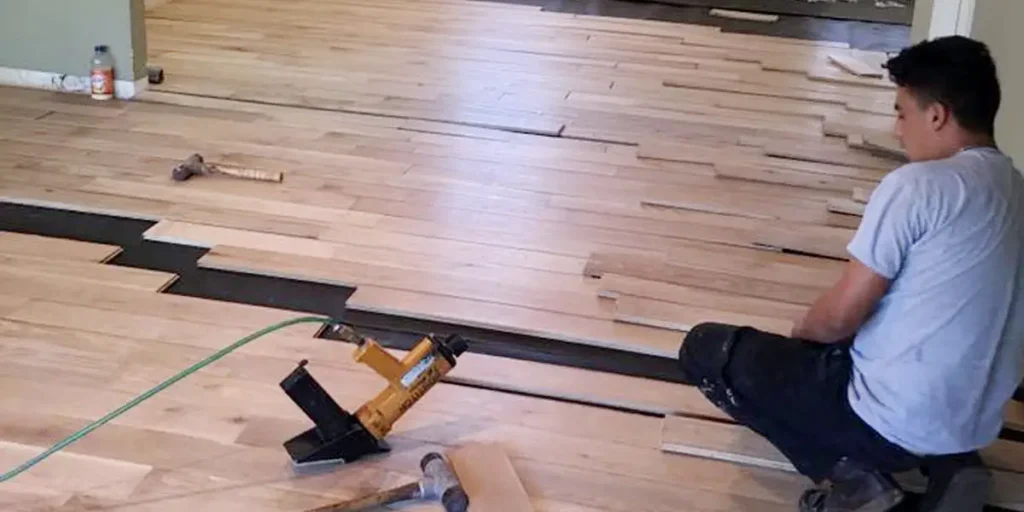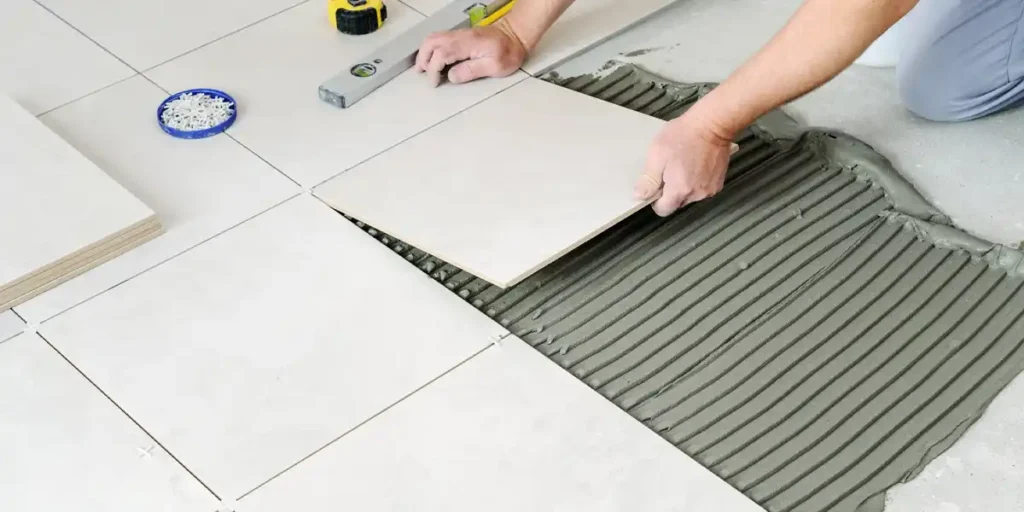When designing or renovating a restaurant, flooring plays a crucial role in defining the ambiance, functionality, and safety of the space.
Wood flooring is a popular choice due to its warmth, elegance, and timeless appeal, but is it the right option for high-traffic commercial settings like restaurants?
If you are wondering:
- Is wood flooring durable enough for a busy restaurant?
- Which types of wood are best for restaurants?
- How do you maintain wood floors in high-traffic areas?
This guide will explore the pros, cons, and best options for using wood flooring for restaurants, helping you decide if it is the right fit for your establishment.
Things to Consider When Choosing Wood Flooring for Restaurants
Before using wood flooring for restaurants, it is important to consider factors like durability, maintenance, slip resistance, and aesthetics.
1. Durability in High-Traffic Areas
Restaurants experience constant foot traffic, spills, and heavy furniture movement. Choosing hardwood or engineered wood can help ensure long-lasting performance.
2. Maintenance and Cleaning Requirements
Wood floors require regular cleaning, protective finishes, and occasional refinishing to maintain their appearance and prevent damage.
3. Slip Resistance for Safety
To avoid slip-and-fall accidents, it is crucial to select wood finishes with slip-resistant properties like polyurethane, acrylic urethane, or anti-slip coatings.
4. Aesthetic Appeal
Wood flooring enhances a restaurant’s atmosphere, providing a warm and inviting feel that appeals to customers.
5. Moisture and Spill Resistance
Wood flooring must be sealed properly to resist moisture, as restaurants often deal with spills and humidity fluctuations.
Best Wood Flooring Options for Restaurants
Choosing the best wood flooring for restaurants depends on durability, maintenance, and style, with options like hardwood, engineered wood, and reclaimed wood offering both aesthetic appeal and long-lasting performance.
1. Hardwood Flooring: A Timeless Choice
Hardwood flooring is a classic option that offers exceptional durability and elegance.
Popular choices include:
- Oak – Strong, durable, and widely available
- Maple – Hard-wearing and resistant to scratches
- Walnut – Rich, dark tones for a high-end appearance
Pros:
- Durable and long-lasting
- Can be refinished multiple times
- Adds value to the restaurant
Cons:
- Expensive upfront costs
- Prone to water damage if not properly sealed
2. Engineered Wood Flooring: A Practical Alternative
Engineered wood flooring consists of a real wood veneer over a plywood core, making it more stable and resistant to moisture than solid hardwood.
Pros:
- Less prone to warping in humid environments
- More affordable than solid hardwood
- Available in various styles and finishes
Cons:
- Cannot be refinished as many times as solid hardwood
- Lower-quality options may not last as long
3. Reclaimed Wood Flooring: Eco-Friendly and Unique
Reclaimed wood flooring repurposes old wood from barns, factories, or warehouses, adding character and sustainability to a restaurant’s design.
Pros:
- Eco-friendly and sustainable
- Adds a rustic, one-of-a-kind aesthetic
- Naturally aged for a distinctive look
Cons:
- May require additional refinishing or treatment
- Availability and pricing can vary
How Wood Flooring Enhances Restaurant Aesthetic Appeal
Wood flooring contributes to a high-end, cozy, and sophisticated ambiance in a restaurant. It works well in various design themes, such as:
- Modern industrial – Pair wood floors with metal fixtures and exposed brick
- Rustic charm – Use reclaimed wood with natural textures
- Classic elegance – Opt for dark hardwood with polished finishes
Ensuring Safety with Slip-Resistant Wood Floors
Slip resistance is a major concern in restaurants, especially in areas prone to spills.
Here is how to enhance safety:
- Use matte or textured finishes instead of glossy surfaces
- Apply anti-slip coatings or oil-based finishes
- Use rugs or mats in high-risk areas like entrances and kitchens
Easy Maintenance Tips for Long-Lasting Wood Floors
To keep restaurant wood floors looking new:
- Sweep and mop regularly to remove dirt and spills
- Use furniture pads to prevent scratches
- Apply protective finishes to seal the surface
- Refinish periodically to maintain durability
Reducing Noise Levels in Restaurants with Proper Flooring
Wood flooring can help reduce noise levels when paired with the right materials. To minimize sound:
- Install acoustic underlayment beneath the wood flooring
- Use area rugs and upholstered furniture to absorb noise
- Choose thicker wood planks for better sound insulation
Comparing Wood Flooring with Other Restaurant Flooring Options
| Flooring Type | Durability | Maintenance | Aesthetic Appeal |
| Hardwood | High | Moderate | Excellent |
| Engineered Wood | High | Low | Excellent |
| Vinyl | High | Low | Good |
| Polished Concrete | Very High | Low | Industrial Look |
| Porcelain Tiles | High | Low | Good |
Final Thoughts: Should You Choose Wood Flooring for Your Restaurant?
Wood flooring for restaurants is an excellent choice that prioritizes aesthetic appeal, durability, and sustainability.
Whether you choose solid hardwood, engineered wood, or reclaimed wood, investing in high-quality flooring will enhance your restaurant’s atmosphere and create a welcoming dining experience.
Still unsure which wood flooring option suits your restaurant best? Contact us today for expert advice and tailored recommendations.
Frequently Asked Questions
1. What is the best type of wood flooring for a restaurant?
Hardwood, engineered wood, and reclaimed wood are all great options. The best choice depends on durability, maintenance needs, and the restaurant’s aesthetic.
2. Is wood flooring durable enough for high-traffic restaurants?
Yes, hardwood and engineered wood flooring are highly durable and can withstand heavy foot traffic if properly maintained. Adding protective finishes and mats in busy areas can extend the floor’s lifespan.
3. How do you maintain wood flooring in a restaurant?
Regular sweeping, damp mopping, and using protective coatings help maintain wood floors. It is also important to clean up spills immediately and use furniture pads to prevent scratches.
4. Does wood flooring help reduce noise in restaurants?
Yes, using an underlayment beneath wood flooring or opting for thicker planks can help absorb sound and reduce noise levels in busy restaurants.
5. Is reclaimed wood flooring a good option for restaurants?
Reclaimed wood is an excellent eco-friendly option that adds character and charm to a restaurant while being durable and cost-effective.




